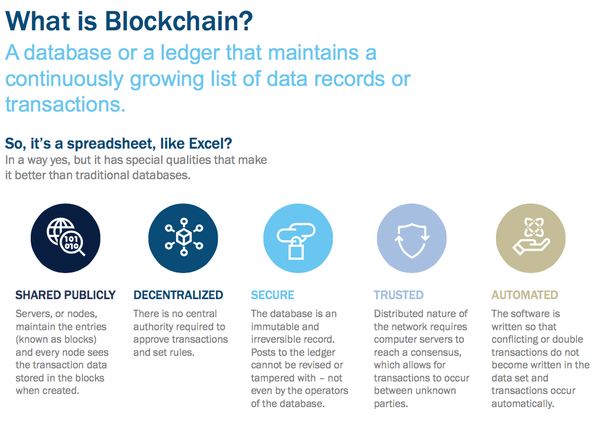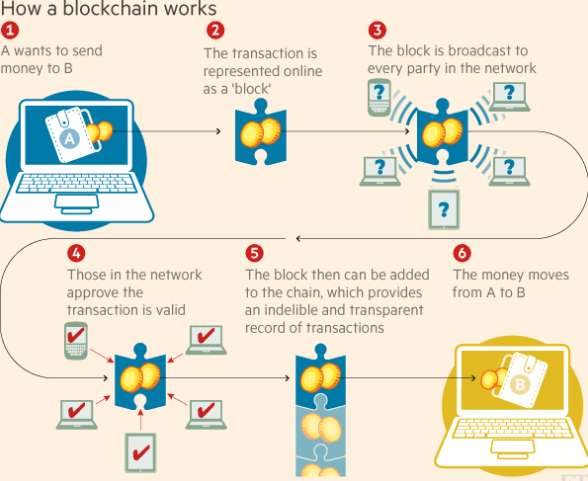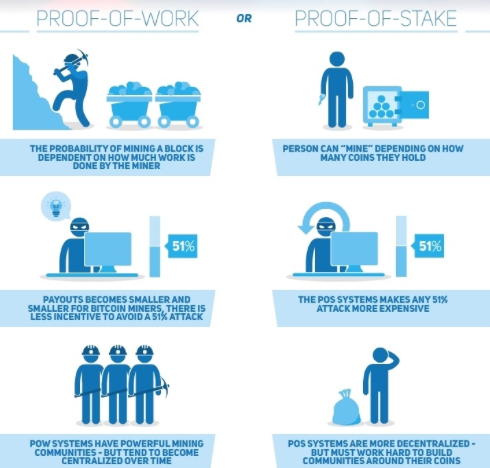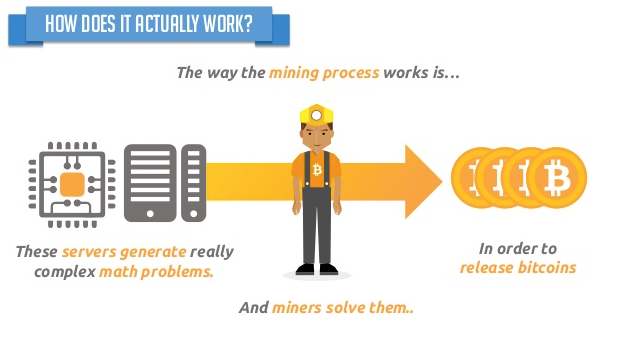It's an in-depth list of the most common terms used in blockchain space.
CryptoWorld is fair for everyone who trust in trust-less environment.

I’m very bullish on the future of blockchain tech. With that being said, the hardest part for me to wrap my head around is how we progress from a small subset of the population that’s even aware of this technology to achieving wide-scale adoption.

To do my part in helping solve the awareness and scalability problem, I’ve complied a dictionary of the terminology most commonly used in the blockchain space (with the help of Wikipedia, GitHub, Blockchain Hub, Blockchain Technologies, and TechTarget). I hope this serves as a valuable resource for those interested in learning and contributing to the blockchain revolution.
Addresses (Cryptocurrency addresses) are used to receive and send transactions on the network. An address is a string of alphanumeric characters, but can also be represented as a scannable QR code.
Agreement ledgers are distributed ledgers used by two or more parties to negotiate and reach agreement.
Altcoin is an abbreviation of “Bitcoin alternative”. Currently, the majority of altcoins are forks of Bitcoin with usually minor changes to the proof of work (POW) algorithm of the Bitcoin blockchain. The most prominent altcoin is Litecoin. Litecoin introduces changes to the original Bitcoin protocol such as decreased block generation time, increased maximum number of coins and different hashing algorithm
Attestation Ledgers are distributed ledgers that provide a durable record of agreements, commitments or statements, providing evidence (attestation) that these agreements, commitments or statements were made.
ASIC is an acronym for “Application Specific Integrated Circuit”. ASICs are silicon chips specifically designed to do a single task. In the case of bitcoin, they are designed to process SHA-256 hashing problems to mine new bitcoins.
Bitcoin is a well known cryptocurrency, based on the proof-of-work blockchain.
A blockchain is a type of distributed ledger, comprised of unchangable, digitally recorded data in packages called blocks (rather like collating them on to a single sheet of paper). Each block is then ‘chained’ to the next block, using a cryptographic signature. This allows block chains to be used like a ledger, which can be shared and accessed by anyone with the appropriate permissions.
Block ciphers are a method of encrypting text (to produce ciphertext) in which a cryptographic key and algorithm are applied to a block of data at once as a group rather than to one bit at a time.
Block height refers to the number of blocks connected together in the block chain. For example, Height 0, would be the very first block, which is also called the Genesis Block.
Block rewards are rewards given to a miner which has successfully hashed a transaction block. Block rewards can be a mixture of coins and transaction fees, depending on the policy used by the cryptocurrency in question, and whether all of the coins have already been successfully mined. The current block reward for the Bitcoin network is 25 bitcoins for each block.
A central ledger refers to a ledger maintained by a central agency.
Chain linking is the process of connecting two blockchains with each other, thus allowing transactions between the chains to take place. This will allow blockchains like Bitcoin to communicate with other sidechains, allowing the exchange of assets between them
A cipher is the algorithm used for the encryption and/or decryption of information. In common language, ‘cipher’ is also used to refer to an encryption message, also known as ‘code’.
Confirmation means that the blockchain transaction has been verified by the network. This happens through a process known as mining, in a proof-of-work system (e.g. Bitcoin). Once a transaction is confirmed, it cannot be reversed or double spent. The more confirmations a transaction has, the harder it becomes to perform a double spend attack.
Consensus Process is a group of peers responsible for maintaining a distributed ledger use to reach consensus on the ledger’s contents.
A consortium blockchain is a blockchain where the consensus process is controlled by a pre-selected set of nodes; for example, one might imagine a consortium of 15 financial institutions, each of which operates a node and of which ten must sign every block for the block to be valid. The right to read the blockchain may be public or restricted to the participants. There are also hybrid routes such as the root hashes of the blocks being public together with an API that allows members of the public to make a limited number of queries and get back cryptographic proofs of some parts of the blockchain state. These blockchains may be considered “partially decentralized”
Cryptoanalysis is the study of methods for obtaining the meaning of encrypted information, without access to the secret information that is normally required to do so.
Cryptocurrency is a form of digital currency based on mathematics, where encryption techniques are used to regulate the generation of units of currency and verify the transfer of funds. Furthermore, cryptocurrencies operate independently of a central bank.
Cryptography refers to the process of encrypting and decrypting information.
A dApp is a decentralized application that must be completely open-source, it must operate autonomously, and with no entity controlling the majority of its tokens.
A DAO (Decentralized Autonomous Organization) can be thought of as a corporation run without any human involvement under the control of an incorruptible set of business rules.
The DAO (yes, there’s a difference) was a venture capital fund built on Ethereum that caused a soft and hark fork. It was kinda a big deal. Read up on that here.
Decryption is the process of turning cipher-text back into plaintext
Encryption is the process of turning a clear-text message (plaintext) into a data stream (cipher-text), which looks like a meaningless and random sequence of bits.
Ether is the native token of the Ethereum blockchain which is used to pay for transaction fees, miner rewards and other services on the network.
Ethereum is an open software platform based on blockchain technology that enables developers to write smart contracts and build and deploy decentralized applications.
Ethereum Classic is a split from an existing cryptocurrency, Ethereum after a hard fork. To learn more about this, click here.
EVM code is the programming language in which accounts on the Ethereum blockchain can contain code. The EVM code associated with an account is executed every time a message is sent to that account, and has the ability to read/write storage and itself send messages.
A digital commodity is a scarce, electronically transferrable, intangible, with a market value.
A digital identity is an online or networked identity adopted or claimed in cyberspace by an individual, organization, or electronic device.
Distributed ledgers are a type of database that are spread across multiple sites, countries or institutions. Records are stored one after the other in a continuous ledger. Distributed ledger data can be either “permissioned” or “unpermissioned” to control who can view it.
Difficulty, in Proof-of-Work mining, is how hard it is to verify blocks in a blockchain network. In the Bitcoin network, the difficulty of mining adjusts verifying blocks every 2016 blocks. This is to keep block verification time at ten minutes.
Double spend refers to a scenario, in the Bitcoin network, where someone tries to send a bitcoin transaction to two different recipients at the same time. However, once a bitcoin transaction is confirmed, it makes it nearly impossible to double spend it. The more confirmations that a particular transaction has, the harder it becomes to double spend the bitcoins.
Fiat currency is any money declared by a government to be to be valid for meeting a financial obligation, like USD or EUR.
A fork is the creation of an ongoing alternative version of the blockchain, by creating two blocks simultaneously on different parts of the network. This creates two parallel blockchains, where one of the two is the winning blockchain.
Gas is a measurement roughly equivalent to computational steps (for Ethereum). Every transaction is required to include a gas limit and a fee that it is willing to pay per gas; miners have the choice of including the transaction and collecting the fee or not. Every operation has a gas expenditure; for most operations it is ~3–10, although some expensive operations have expenditures up to 700 and a transaction itself has an expenditure of 21000.
Halving: Bitcoins have a finite supply, which makes them a scarce digital commodity. The total amount of bitcoins that will ever be issued is 21 million. The number of bitcoins generated per block is decreased 50% every four years. This is called “halving.” The final halving will take place in the year 2140.
A hardfork is a change to the blockchain protocol that makes previously invalid blocks/transactions valid, and therefore requires all users to upgrade their clients.
Hashcash is a proof-of-work system used to limit email spam and denial-of-service attacks, and more recently has become known for its use in bitcoin (and other cryptocurrencies) as part of the mining algorithm.
Hashrate is the number of hashes that can be performed by a bitcoin miner in a given period of time (usually a second).
Initial Coin Offering (ICO) is an event in which a new cryptocurrency sells advance tokens from its overall coinbase, in exchange for upfront capital. ICOs are frequently used for developers of a new cryptocurrency to raise capital.
A ledger is an append-only record store, where records are immutable and may hold more general information than financial records.
Litecoin is a peer-to-peer cryptocurrency based on the Scrypt proof-of-work network. Sometimes referred to as the silver of bitcoin’s gold.
Mining is the process by which transactions are verified and added to a blockchain. This process of solving cryptographic problems using computing hardware also triggers the release of cryptocurrencies.
Multi-signature (multisig) addresses allow multiple parties to require more than one key to authorize a transaction. The needed number of signatures is agreed at the creation of the address. Multi signature addresses have a much greater resistance to theft.
A node is any computer that connects to the blockchain network.
A full node is a node that fully enforces all of the rules of the blockchain
Peer-to-peer (P2P) refers to the decentralized interactions that happen between at least two parties in a highly interconnected network. P2P participants deal directly with each other through a single mediation point.
A permissioned ledger is a ledger where actors must have permission to access the ledger. Permissioned ledgers may have one or many owners. When a new record is added, the ledger’s integrity is checked by a limited consensus process. This is carried out by trusted actors — government departments or banks, for example — which makes maintaining a shared record much simpler that the consensus process used by unpermissioned ledgers.
Permissioned blockchains provide highly-verifiable data sets because the consensus process creates a digital signature, which can be seen by all parties.

A private key is a string of data that shows you have access to bitcoins in a specific wallet. Private keys can be thought of as a password; private keys must never be revealed to anyone but you, as they allow you to spend the bitcoins from your bitcoin wallet through a cryptographic signature.
Proof of Authority is a consensus mechanism in a private blockchain which essentially gives one client (or a specific number of clients) with one particular private key the right to make all of the blocks in the blockchain

Proof of Stake is an alternative to the proof-of-work system, in which your existing stake in a cryptocurrency (the amount of that currency that you hold) is used to calculate the amount of that currency that you can mine.
Proof of Work is a system that ties mining capability to computational power. Blocks must be hashed, which is in itself an easy computational process, but an additional variable is added to the hashing process to make it more difficult. When a block is successfully hashed, the hashing must have taken some time and computational effort. Thus, a hashed block is considered proof of work.
Protocols are sets of formal rules describing how to transmit or exchange data, especially across a network.
Ripple is a payment network built on distributed ledgers that can be used to transfer any currency. The network consists of payment nodes and gateways operated by authorities. Payments are made using a series of IOUs, and the network is based on trust relationships.
A scrypt is an alternative proof of work system to SHA-256, designed to be particularly friendly to CPU and GPU miners, while offering little advantage to ASIC miners.
SHA 256 is the cryptographic function used as the basis for bitcoin’s proof of work system.
Smart contracts are contracts whose terms are recorded in a computer language instead of legal language. Smart contracts can be automatically executed by a computing system, such as a suitable distributed ledger system.
A softfork is a change to the bitcoin protocol wherein only previously valid blocks/transactions are made invalid. Since old nodes will recognize the new blocks as valid, a softfork is backward-compatible. This kind of fork requires only a majority of the miners upgrading to enforce the new rules
Stream ciphers are a method of encrypting text (cyphertext) in which a cryptographic key and algorithm are applied to each binary digit in a data stream, one bit at a time.
A token is a digital identity for something that can be owned.
A tokenless ledger refers to a distributed ledger that doesn’t require a native currency to operate.
A transaction block is a collection of transactions on the bitcoin network, gathered into a block that can then be hashed and added to the blockchain.
Transaction fees are small fees imposed on some transactions sent across the bitcoin network. The transaction fee is awarded to the miner that successfully hashes the block containing the relevant transaction.
Unpermissioned ledgers such as Bitcoin have no single owner — indeed, they cannot be owned. The purpose of an unpermissioned ledger is to allow anyone to contribute data to the ledger and for everyone in possession of the ledger to have identical copies.
A wallet is a file that contains a collection of private keys

#Cryptocurrency #Welovesteemit
Don't Forget to Upvote , Resteem & Follow to get the best updates about Cryptocurrencies and Bitcoins, Resteemit , Vote, interact, Altcoins, Mining, Go ahead of the latest updates. We'll do the same Upvote.
This is a great post and should be pinned. Full of good info.
yeah thanks it would be pinned for sure.
Thank you @techminer for sharing the common terms used in blockchain space. Looking forward to read more information from you.
@shirish5 We would love to share the info. related to blockchain and its devs.
Hi! I am a robot. I just upvoted you! I found similar content that readers might be interested in:
http://www.blockchaintechnologies.com/blockchain-glossary